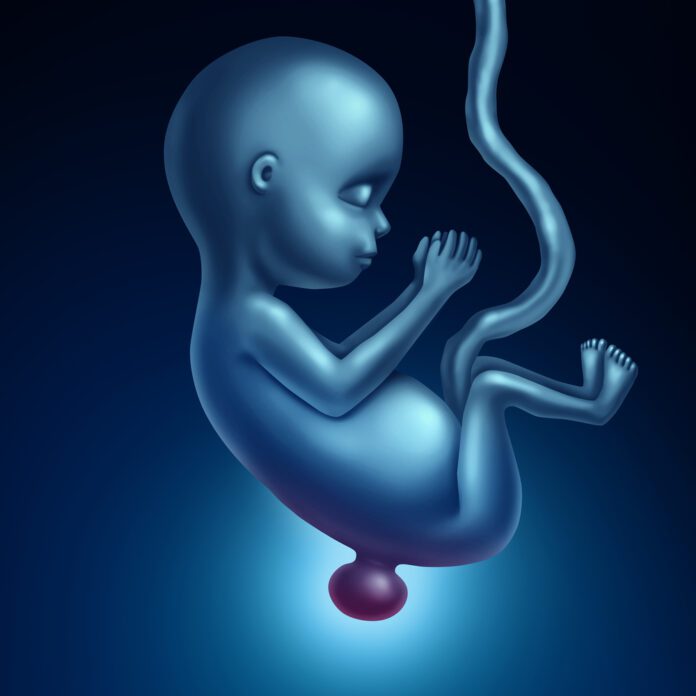Overview Of Birth Defect – Myelomeningocele
Myelomeningocele is a birth defect in which the backbone and spinal canal do not close before birth.
The condition is a type of spina bifida.
Commonly Associated With
Meningomyelocele; Spina bifida; Cleft spine; Neural tube defect (NTD)
Causes Of Birth Defect – Myelomeningocele
Normally, during the first month of pregnancy, the two sides of the baby’s spine (or backbone) join together to cover the spinal cord, spinal nerves, and meninges (the tissues covering the spinal cord). The developing brain and spine at this point are called the neural tube. Spina bifida refers to any birth defect in which the neural tube in the area of the spine fails to close completely.
Myelomeningocele is a neural tube defect in which the bones of the spine do not completely form. This results in an incomplete spinal canal. The spinal cord and meninges protrude from the child’s back.
This condition may affect as many as 1 out of every 4,000 infants.
The rest of spina bifida cases are most commonly:
- Spina bifida occulta, a condition in which the bones of the spine do not close. The spinal cord and meninges remain in place and skin usually covers the defect.
- Meningoceles, a condition where the meninges protrude from the spinal defect. The spinal cord remains in place.
- Other congenital disorders or birth defects may also be present in a child with myelomeningocele. Eight out of ten children with this condition have hydrocephalus.
Other disorders of the spinal cord or musculoskeletal system may be seen, including:
- Syringomyelia (a fluid-filled cyst within the spinal cord)
- Hip dislocation
- The cause of myelomeningocele is not known. However, low levels of folic acid in a woman’s body before and during early pregnancy appear to play a part in this type of birth defect. Folic acid (or folate) is important for the development of the brain and spinal cord.
- If a child is born with myelomeningocele, future children in that family have a higher risk than the general population. However, in many cases, there is no family connection. Factors such as diabetes, obesity, and the use of anti-seizure medicines in the mother may increase the risk of this defect.
Symptoms Of Birth Defect – Myelomeningocele
A newborn with this disorder will have an open area or a fluid-filled sac on the mid to lower back.
Symptoms may include:
- Loss of bladder or bowel control
- Partial or complete lack of sensation
- Partial or complete paralysis of the legs
- Weakness of the hips, legs, or feet of a newborn
Other signs and/or symptoms may include:
- Abnormal feet or legs, such as clubfoot
- A buildup of fluid inside the skull (hydrocephalus)
Exams & Tests
Prenatal screening can help detect this condition. During the second trimester, pregnant women can have a blood test called the quadruple screen. This test screens for myelomeningocele, Down syndrome, and other congenital diseases in the baby. Most women carrying a baby with spina bifida will have an increased level of a protein called maternal alpha fetoprotein (AFP).
If the quadruple screen test is positive, further testing is needed to confirm the diagnosis.
Such tests may include:
- Pregnancy ultrasound
- Amniocentesis
- Myelomeningocele can be seen after the child is born. A neurologic exam may show that the child has loss of nerve-related functions below the defect. For example, watching how the infant responds to pinpricks at various locations may tell where the baby can feel the sensations.
- Tests done on the baby after birth may include x-rays, ultrasound, CT, or MRI of the spinal area.
Treatment Of Birth Defect – Myelomeningocele
The health care provider may suggest genetic counseling. Intrauterine surgery to close the defect (before the baby is born) may reduce the risk of some later complications.
After your baby is born, surgery to repair the defect is most often suggested within the first few days of life. Before surgery, the infant must be handled carefully to reduce damage to the exposed spinal cord.
This may include:
- Special care and positioning
- Protective devices
- Changes in the methods of handling, feeding, and bathing
- Children who also have hydrocephalus may need a ventriculoperitoneal shunt placed. This will help drain the extra fluid from the ventricles (in the brain) to the peritoneal cavity (in the abdomen).
Antibiotics may be used to treat or prevent infections such as meningitis or urinary tract infections.
Most children will need lifelong treatment for problems that result from damage to the spinal cord and spinal nerves.
This includes:
- Bladder and bowel problems — Gentle downward pressure over the bladder may help drain the bladder. Drainage tubes, called catheters, may be needed as well. Bowel training programs and a high fiber diet may improve bowel function.
- Muscle and joint problems — Orthopedic or physical therapy may be needed to treat musculoskeletal symptoms. Braces may be needed. Many people with myelomeningocele primarily use a wheelchair.
Follow-up exams generally continue throughout the child’s life. These are done to:
- Check developmental progress
- Treat any intellectual, neurological, or physical problems
- Visiting nurses, social services, support groups, and local agencies can provide emotional support and assist with the care of a child with a myelomeningocele who has significant problems or limitations



